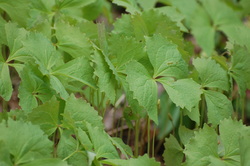 Vanilla Leaf (Achlys triphylla) is a member of the Berberadaceae, a family of plants that are quite useful here at Leaning Oaks, since many members of this family are not eaten by deer . Our unfenced ornamental garden has a disproportionately large number of Beberadaceans. This stand of Vanilla Leaf is from the garden , a small portion of rhizome was transplanted from the woods below the house into the flower garden 5 years ago. Like many members of this family, they produce almost all their leaves in one burst annually, so the initial transplant looked a little woebegon for the first year. Each year however, the area covered by these attractive leaves has steadily increased - and now it covers a sizeable patch in the garden. Vanilla leaf is a very good plant for one of the most difficult areas to garden in - dry shade. Vanilla Leaf is named after the smell of the drying leaves, formerly used as a a room deodorizer and an insect repellent. Since the fresh leaves have no discernable scent, one of the other common names is Sweet-After-Death. The active ingredient in terms of both the perfume, and it's insecticidal properties is a chemical called coumarin.
0 Comments
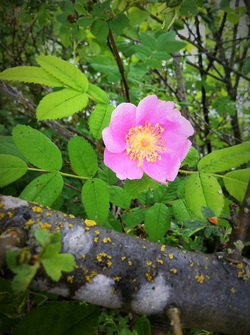 Nootka Rose (Rosa nutkana var. nutkana ) is in full bloom right now and the smell of the flowers is easily detectable when passing a shrub, especially in the evening. Unlike most other roses, Nootka Rose is detectable by one's nose even when its not in bloom, since the foliage has a spicy metallic smell. The smell always reminds me of childhood bike rides, often at the very end of the day - pushing way past the "be home before dark" curfew. The swampy section of Arbutus Road on the north end of Salt Spring Island was detectable by the aromatic foliage of the Nootka Rose -and it signified that the next driveway to the right was home. The flowers of this rose are significantly larger than the flowers of 111. Baldhip Rose, and it grows in much damper locations. Here at Leaning Oaks it is restricted to the very lowest point on the property. In winter, especially in full sun locations, the fruiting bodies or hips are very showy. Rose hip pie is a delicious, but the need to make sure the outer hip is used but all of the irritating hairy seeds are avoided make it a somewhat labour intensive dessert. Western Tanagers (Piranga ludoviciana) are a summer bird for us. They arrive the last week of April and stay until the first week of September. Our best looks almost always are when then come to the pond to bath and drink. To be more accurate, they are particularly attracted to the gravel beds that we built to filter the pond water. The shallow water flowing over the rocks and gravel are the favourite bathing area for many species, including these tanagers, Purple Finches, Spotted Towhees, Dark-eyed Juncos, Warblers and others. This summer we intend to spend part of a day in a blind photographing the bathers, until then, these photos were "shot from the hip" during happy hour last Sunday on the deck beside the water features.
The Bubble Story
Once a newly hatched spittlebug is hatched it will wander until it finds a suitable host plant with a succulent supply of sap. The beak is inserted down to the xylem and they begin to suck considerable quantities of sap. The excess water and sugar is forced through the gut and out the anus where it adheres to the plant and nymph which moves the liquid over its body using the back legs. The nymph breathes through spiracles on the outside of the abdomen. Bubble making happens by vigorous movements of the abdomen as the nymph sucks air into its abdominal breathing tube and forcing it out, while pumping its abdomen and moving it every which way. There is a mucilaginous substance that is exuded from glands on the abdomen that keeps the bubbles from collapsing…and why the goober balls feel so slimy when you get them on your legs as you are walking. This foam keeps away predators, keeps the wee nymph moist and insulated. http://www.sciencedirect.com/science/article/pii/0020179087900096 (the froth composition...should you care to know) The species that we found (pretty sure....I'd like to find an adult to be 100%) on Leaning Oaks is Philaenus spumarius - and *sigh*, it is a European introduction. There are other possibilities here for other species so we will keep looking. It can be a economic pest on some crops if in high densities or when the froth acts as a vector for fungi. So far our rosemary is doing just fine-- Oh--and if you want to identify your spittlebugs, Agriculture Canada has a book for you! On line courtesy of the Entomological Society of Canada: http://www.esc-sec.ca/aafcmonographs/insects_and_arachnids_part_10.pdf 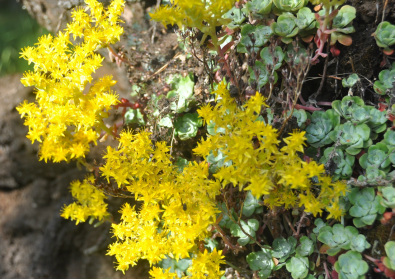 Sedum spathulifolium brightens the rock out crops, bare patches, the top of the living roof on the woodshed and does so for a long bloom period. The species name refers to the succulent leaves that form a basal rosette and that are shaped liked the tip of a thumb. It has been taken up by the horticultural trade in Europe as a rock garden plant, with good reason! There are a couple of tidbits of folklore around Midsummer's Eve (coming soon) and the longevity of the picked stalks. A stalk placed on the windowsill will turn during the night towards the direction from which your lover is to come. Another tale is that a young woman would pick two stalks; one representing herself, the other, her lover. The length of time "he" lasted was an indication of his fidelity. Beautiful, tall, the bees love them...and they are exotic. This is one of those alien European species that we let live where it grows in somewhat disturbed areas. Digitalis purpurea is a source of digitoxin, a glycoside that has been used as a heart stimulant since 1785; HOWEVER it is toxic and self medication is definitely a no no. The medical uses and early research are outlined here: http://www.kew.org/science-conservation/plants-fungi/digitalis-purpurea-common-foxglove
Common foxgloves show up regularly in folk tales as well, providing clothing for the faeries and gloves for foxes so they can creep into the chicken coop. The Miracle of the Bees and the Foxgloves BY ANNE STEVENSON Because hairs on their speckled daybeds baffle the little bees, foxgloves come out to advertise for rich bumbling hummers, who crawl into their tunnels-of-delight with drunken ease (see Darwin’s chapters on his foxglove summers) plunging over heckles caked with sex-appealing stuff to sip from every hooker its intoxicating liquor and stop it propagating in a corner with itself. And this is how the foxflower keeps its sex life in order. Two anthers—adolescent, in a hurry to dehisce-- let fly too soon, so pollen lies in drifts around the floor. Along swims bumbler bee and makes an undercoat of this, reverses, exits, lets it fall by accident next door. So ripeness climbs the bells of Digitalis, flower by flower, undistracted by a Mind, or a Design, or by desire. Creeping Buttercup (Ranunculus repens) is an aggressive introduced species that spreads by both runners and seed. At Leaning Oaks it is more or less confined to the cultivated portions of the garden (despite my efforts) and to the lawn and other disturbed areas. Fortunately, most of our meadow is too dry for Creeping Buttercup to do very well. Contact with the sap of this species can cause skin blisters, so weeding this out wearing gloves is a good idea. There is a cultivar with a yellow variegated leaf called "Buttered Popcorn" - however, it is just as invasive as the wild type and worth avoiding.
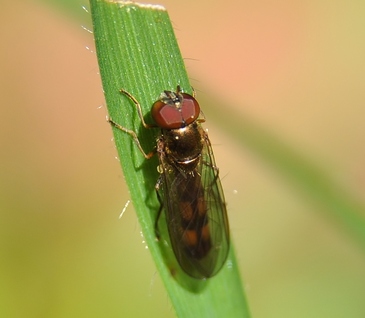 I am going out on a limb here; there are two similar genera of syrphids and without a specimen I am not sure that I can say conclusively that this is a Melanostoma rather than a Platycheirus sp. There is only the one species of Melanostoma in this area. Syrphids are also known as Hover Flies or Flower Flies....and yes, you will often see them hovering over flowers! They are very important ecologically as pollinators and many are fabulous mimics of various Hymenopterans. I really like this on-line key (even though I still couldn't get it to genus[!]) for its use of photos and clickable couplets. http://www.biology.ualberta.ca/bsc/ejournal/mylmst_23/intro.html 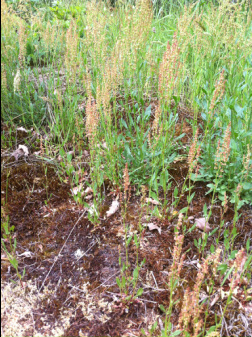 Sheep Sorrel (Rumex acetosella)is an introduced species with arrowhead shaped leaves that spreads by underground runners. The female flowers (there are separate male and female plants) are burgundy red and the plant is not unattractive when in bloom. It is a very adaptable species, and grows in a wide variety of habitats. Here it grows in cracks in the bedrock in our Garry Oak meadow. The leaves are edible, and lemony-tart and make a good addition to a salad, soup or as a component of a salad dressing. Note however that they are high in oxalic acid, which is toxic in large quantities, so use in moderation. Other common names include Red Sorrel, Common Sorrel and Field Sorrel. Baldhip Rose is the commonest wild rose on the property at Leaning Oaks. It is unusual for a rose in that is a shade tolerant species. Most roses retain the sepal crown on the bottom of the fruit (in the same way that an apple does), but this species drops this appendage and the small pear shaped fruit is smooth. The latin name, Rosa gymnocarpa refers to this; gymnocarpa means "naked fruit". The leaves can be used to make a rose tea.
Robert's Geranium (Geranium robertianum) is an introduced herbaceous weed. It is probably best known for its bright pink flowers and distinctly unpleasant smell if the foliage is crushed or bruised (earning it another common name, "Stinky Bob"). It is rumoured to be edible and has been used for a variety of medicinal uses, although at least one website cautions that there has been very little testing of side effects. It is one of the few non-native plants which can invade shady forests and I have seen it moving into some of the older forests on southern Vancouver Island.
Geranium is greek for "little crane's bill", in reference to the shape of the fruit. 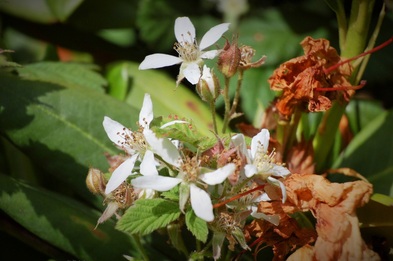 Trailing Blackberry is both beloved and cursed, depending on where an individual plant grows and the nature of your interaction with it. The fruit is wonderful, and this species has been used in breeding programs to produced very flavourful blackberries. In addition, it is one of the parents of the hybrid loganberry, marionberry and boysenberry. The foliage is also very flavourful and is a very good leaf to steep to make blackberry tea. On the other hand, it can be a rapidly growing weed in the garden, fully capable of creeping along the ground or scrambling over shrubs and perennials for several meters in a single growing season. Branch tips often root, and a neglected vine quickly can turn into a big job. The stems are thorny, so pulling without gloves usually gets you a hand full of thorns. Summer strolls in flip-flops or sandals is an excellent way to find this plant, and it becomes painfully obvious why one alternative name is "ankle saw". Rubus ursinus ssp. macropetalus is dioecious, that is males and females are on separate plants. Pity that most of the plants here at Leaning Oaks are male, and therefore don't produce fruit. Alternate common names are Pacific Blackberry, Dewberry, Douglas Berry and California Blackberry. I have several other names for it, best not repeated here. 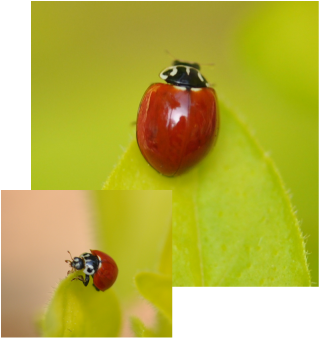 Spotless and shiny with a funky pattern on the pronotum that makes up for any lack of spots, Cycloneda polita is found through southern BC and west to the east slope of the Rockies. The term ladybird originated in the Middle Ages. They were called "beetle of our Lady", referring to Mary (the virgin) as she was just about always dressed in red in religious paintings. The other origin of the name comes from the Catholic farmers praying to Mary for help with crops and when the beetles arrived and did help by chowing down on the aphids and other crop pests, the farmers referred to them as "our lady's beetle". (from "All things Catholic" and "English Stack Exchange" 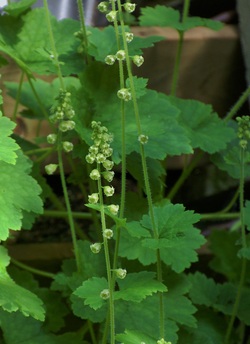 Fringecup is one of my favourite native plants. The lush basal rosette and strange recurved, filigree petals are subtle, unusual and elegant. It is, however, the perfume that these flowers produce that makes Tellima grandiflora so rewarding. This perfume brings back strong memories of my days as a park naturalist. The hill behind the visitor centre at Goldstream Provincial Park was covered in Fringecup and its perfume was a fixture during the busy days of spring school programs. Fringcup is a member of the saxifrage family and it is the only species in the genus. This makes the latin name (which means large flowered Tellima) sort of silly, since there is only one kind of Tellima. 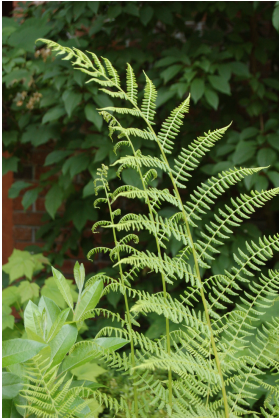 Lady Fern (Athyrium filix-femina ssp. cyclosorum) is a large feathery fern at Leaning Oaks, second in size only to the Western Sword Fern. Unlike that species, which is evergreen, Lady Fern fronds go dormant in the fall and disappear for the winter months. It is a very attractive plant, and widely used in gardens. It grows best in shady sites that are slightly moist and shaded. 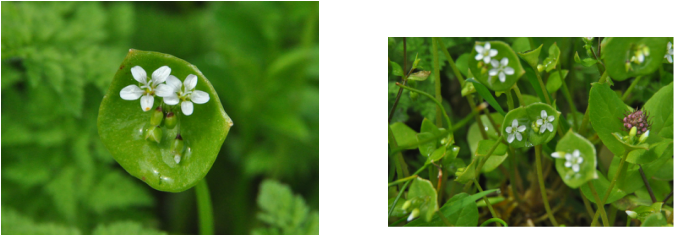 It is the two opposite leaves that are joined together forming a shallow cup that make this plant distinct. Other than that it can be quite variable depending on the moisture and soil conditions. Claytonia perfoliata ssp. perfoliata is edible and makes a bright addition to salads or anywhere that greens are desired. It is very exciting to hear the first rustle of the leaves and dry grasses in the spring as the snakes emerge and the little ones head out to explore the world. The gartersnake that we see most frequently at Leaning Oaks is the northwestern or Thamnophis ordinoides. They are very variable in colour from the ones seen above to a drab plain brown. They feed on slugs and earthworms -a happy thing for the garden! The females can be nearly a meter in total length. The small, blunt nosed head that is not very distinct from the rest of the body help to distinguish this species from the other two gartersnakes that are found on Vancouver Island- and B.C.. They are also the most terrestrial of the three species.
We had an amazing experience one afternoon as we watched a Great Horned Owl slowly, slowly stalk an adult northwestern garternake, grab it and then start at the head and feed it slowly lengthwise down it's bill - all while the owl stood on a bench below our vantage point from an upper window. 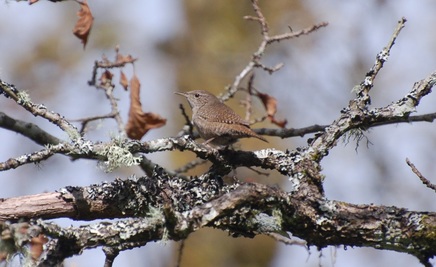 House Wrens (Troglodytes aedon) are spring and summer birds for us at Leaning Oaks. Our earliest record is from the first week of April and the latest is the third week of August. We have records from almost every year we have been on the property, however some years it is just a bird or two briefly stopping in during spring migration. Some years however, we have birds that breed on the property, using one of our nest boxes. They aren't easily overlooked early in the breeding season as they are very vocal with wheezy, chattering, complicated songs that are produced many, many times a day. They are not only industrious singers but ambitious nest constructors as well, with many long sticks and pieces of grass stuffed into the nest boxes, nearly filling them. 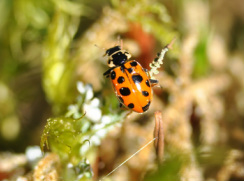 I found this elongated spotted beetle crawling deep through the moss in the middle of April, so probably one of the earlier ones. We found a key online, http://www.discoverlife.org/20/q?guide=Ladybug that was pretty easy to use and (hopefully) accurate. Lady beetles have a larval stage where they look like a teeny tiny spiky alligators. Both the adults and the larvae are voracious feeders --particularly on aphids. The scientific name of the 13 spot is a mouthful, Hippodamia tredecimpunctata. 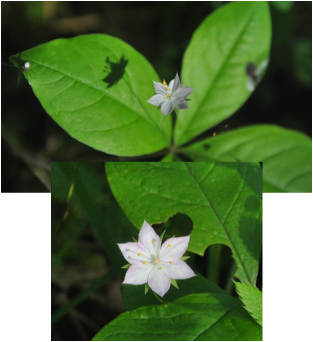 A little way from the meadow, in dappled shade and often near the base of a Douglas-fir, Trientalis borealis ssp. latifolia sports a starry flower on a oh so slender stalk--the flower appearing to float above the broad leaves. Indian Potato, another English name refers to the small, elongate pink tubers that were gathered for food by the First Nations. They are apparently a good source of starch. I am going to have to remember to go out and photograph the seed capsule - the description is that it looks like a little tiny soccer ball. |
AuthorsTwo biologists on a beautiful property armed with cameras, smart phones and a marginal knowledge of websites took up the challenge of documenting one species a day on that property. Join along! Posts and photographs by Leah Ramsay and David Fraser (unless otherwise stated); started January 1, 2014. Categories
All
Archives
May 2025
|
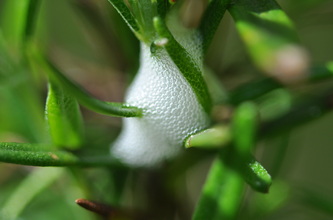
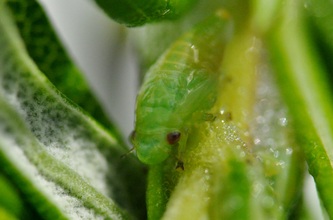
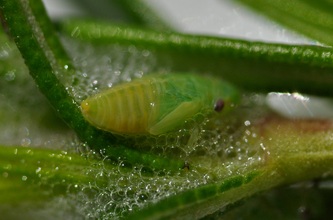
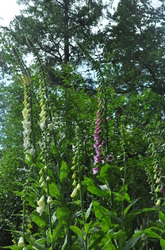
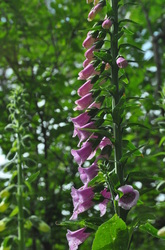
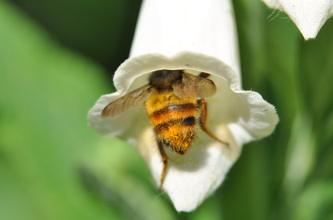
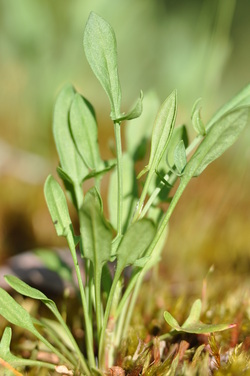
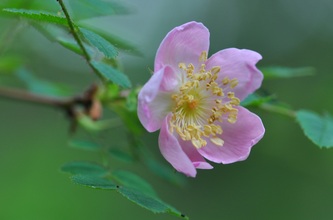
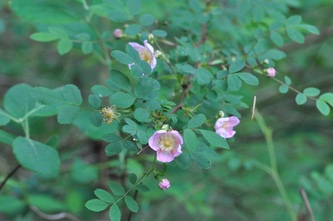
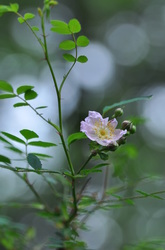
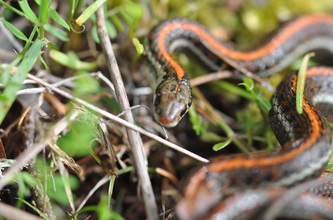
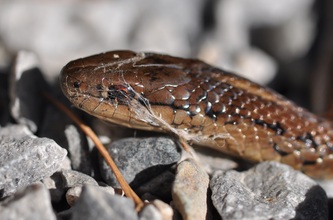
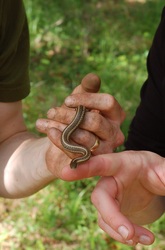
 RSS Feed
RSS Feed